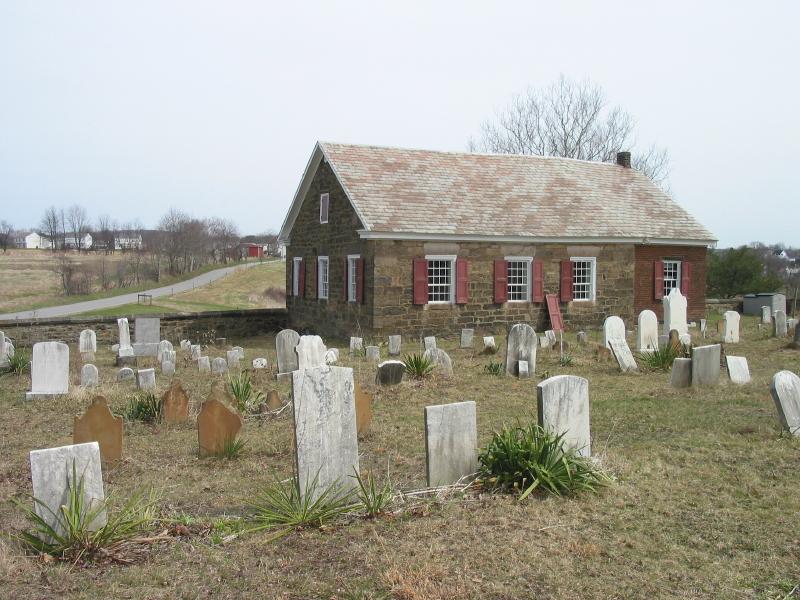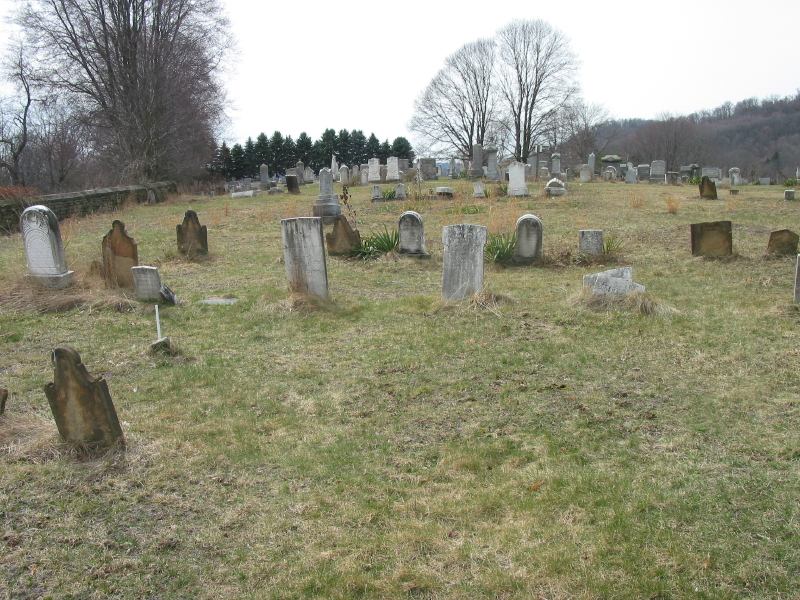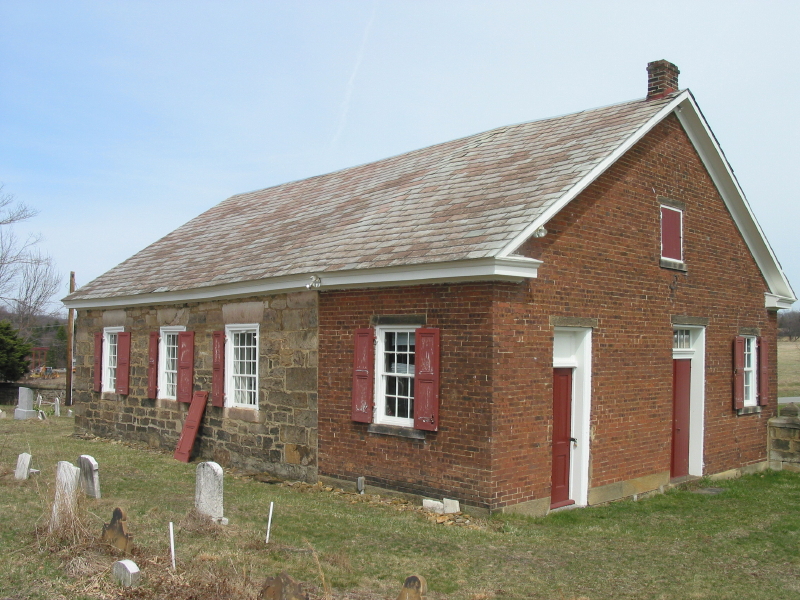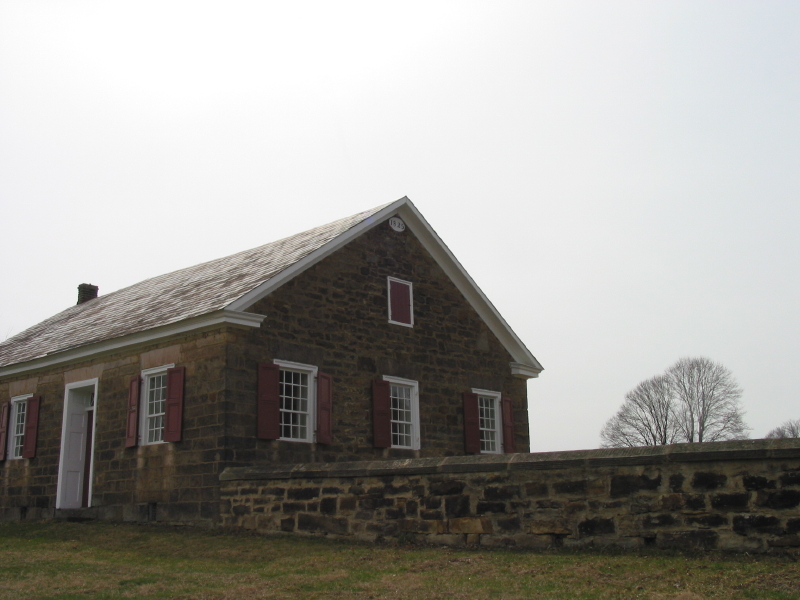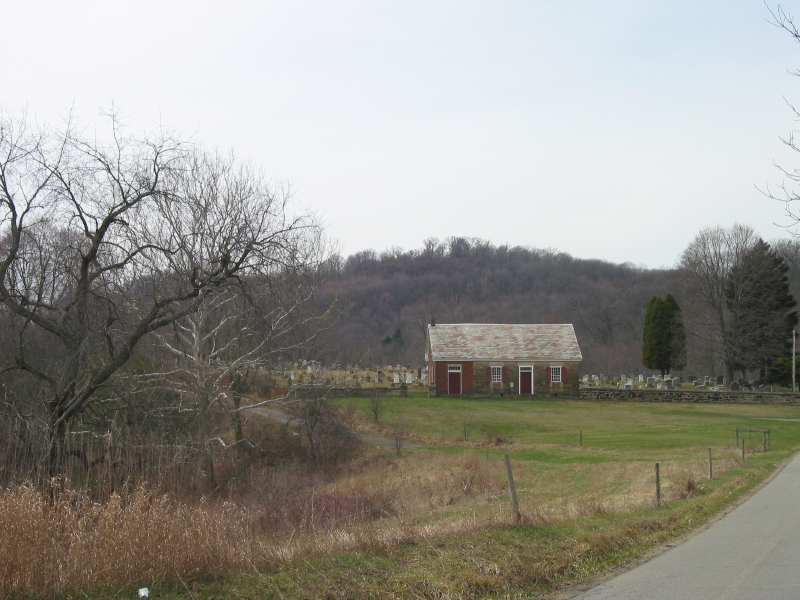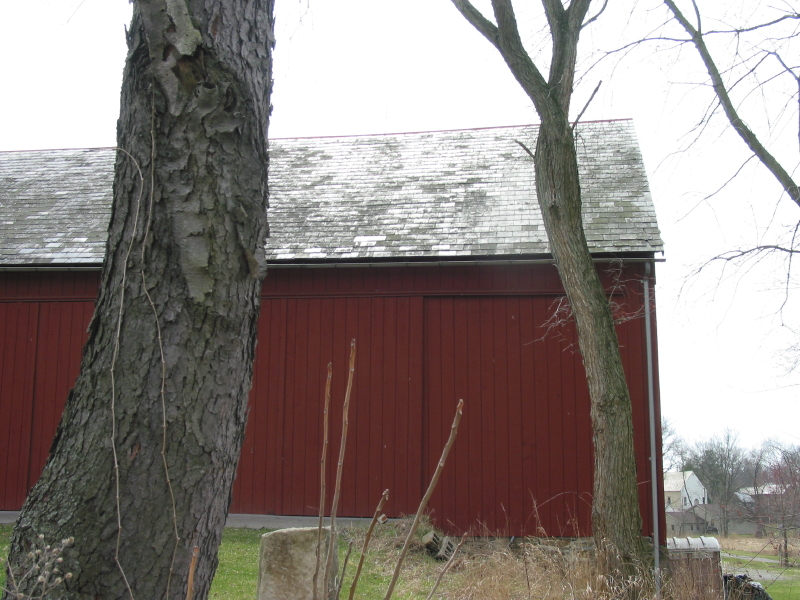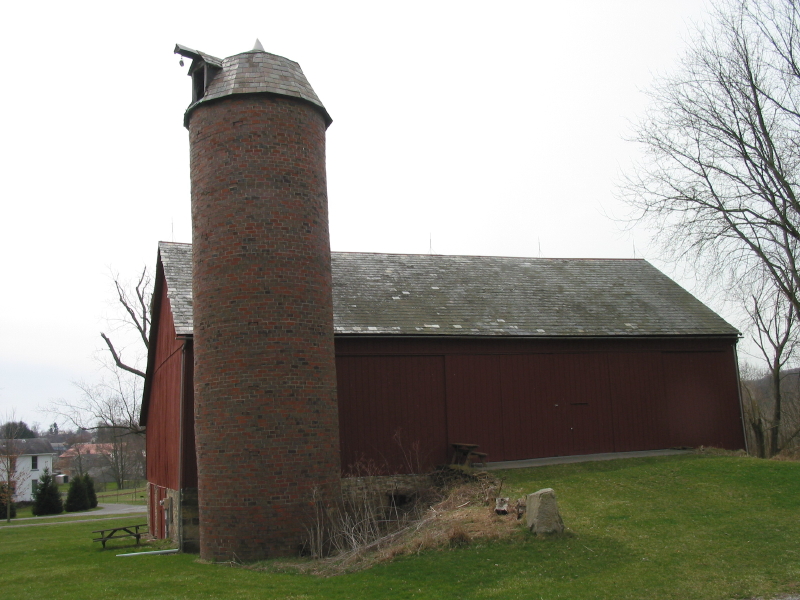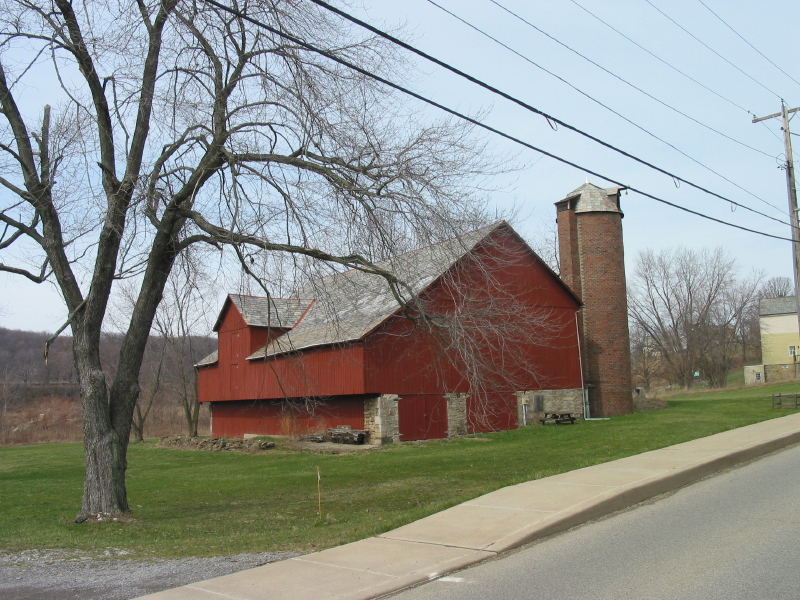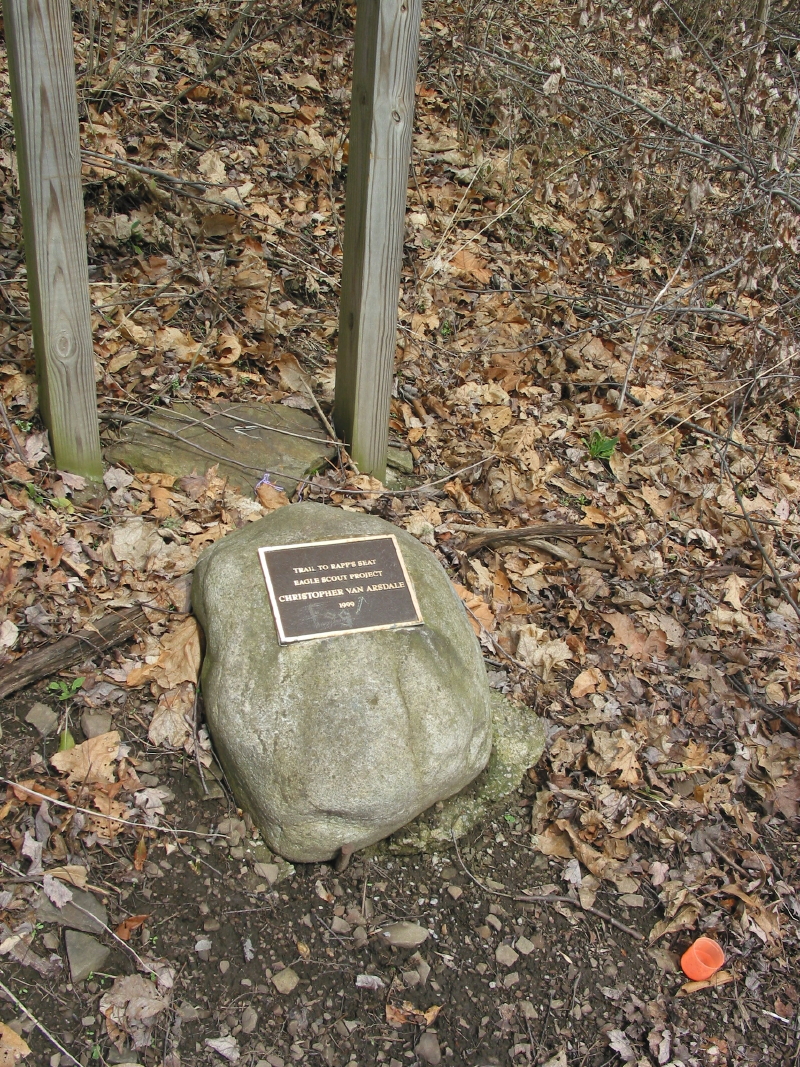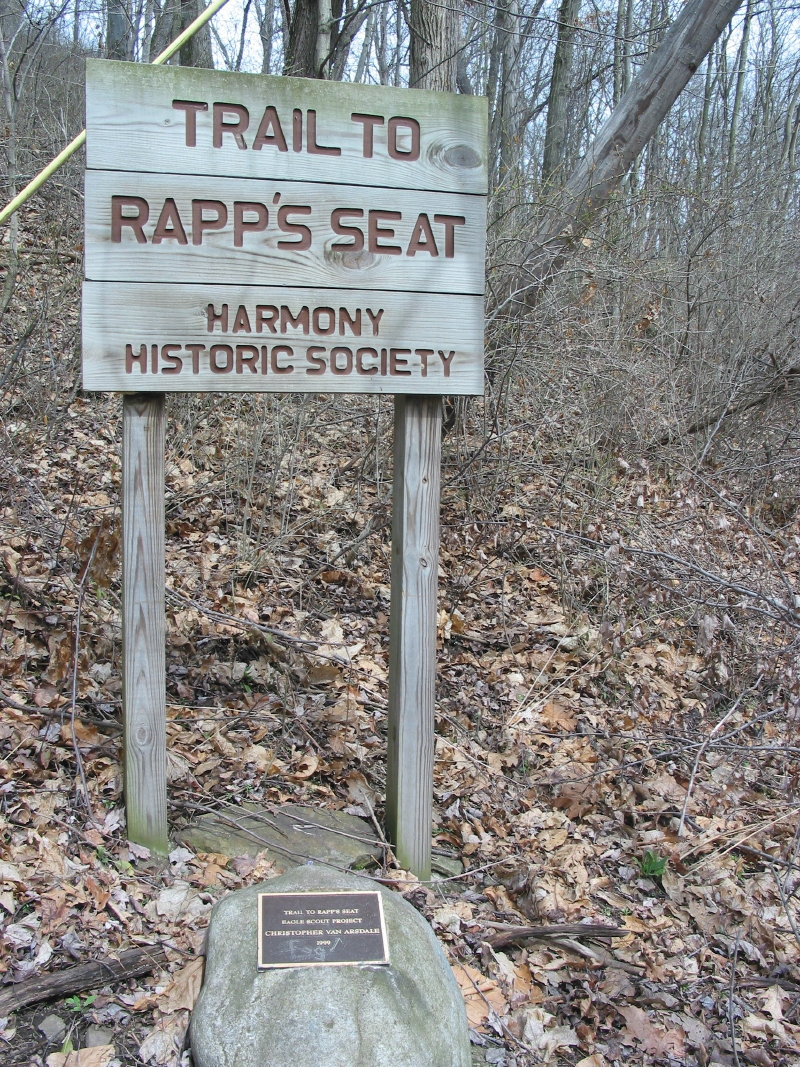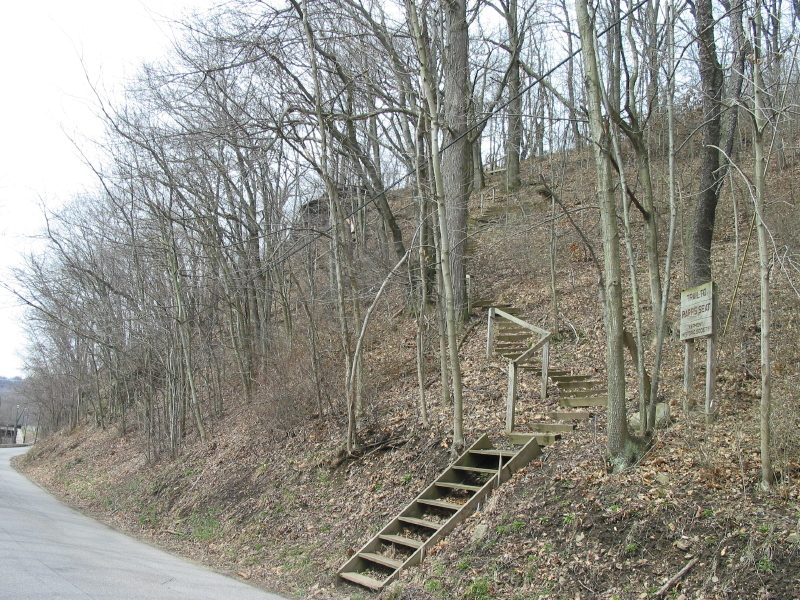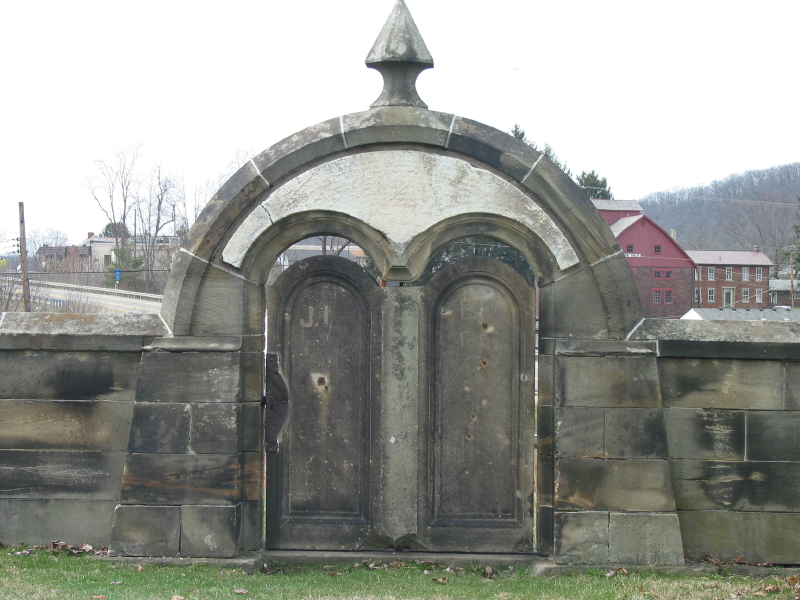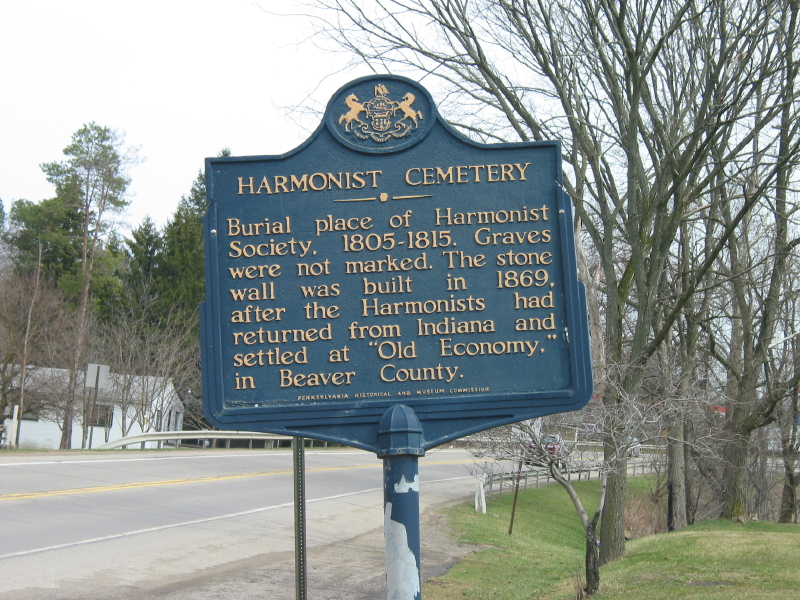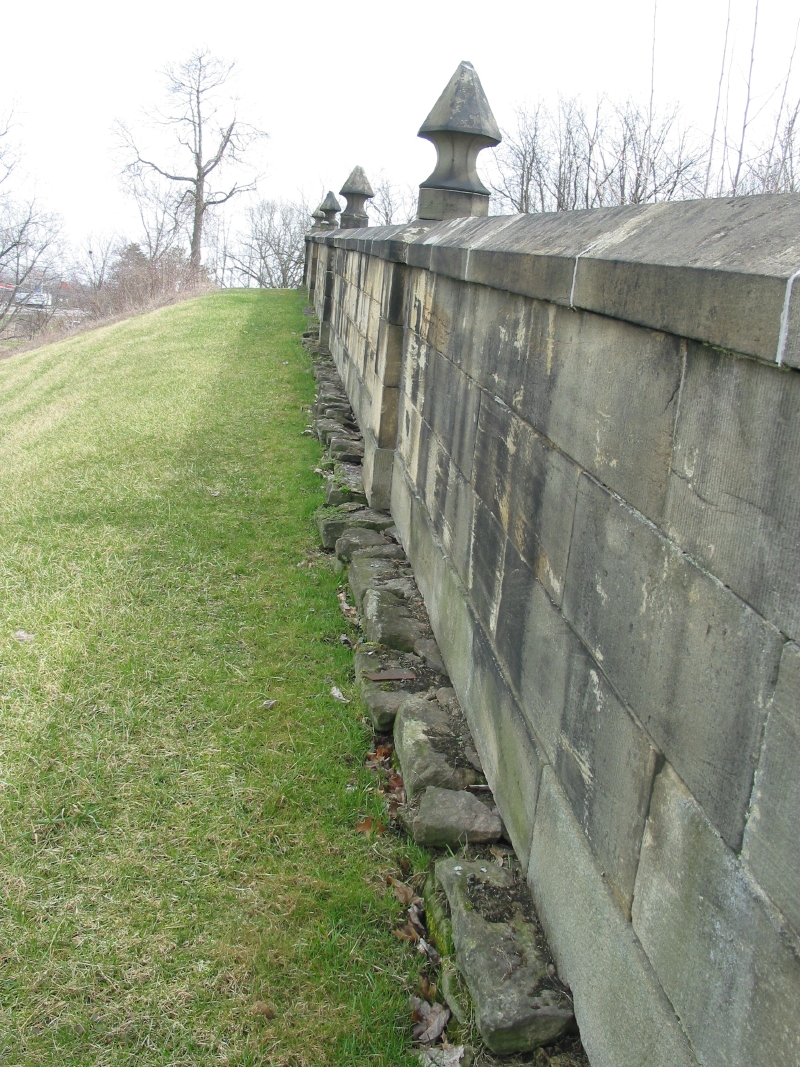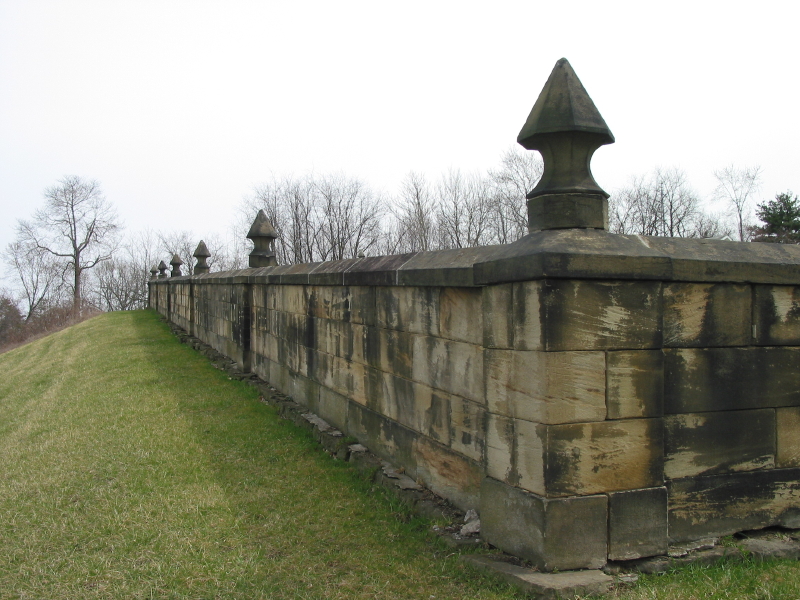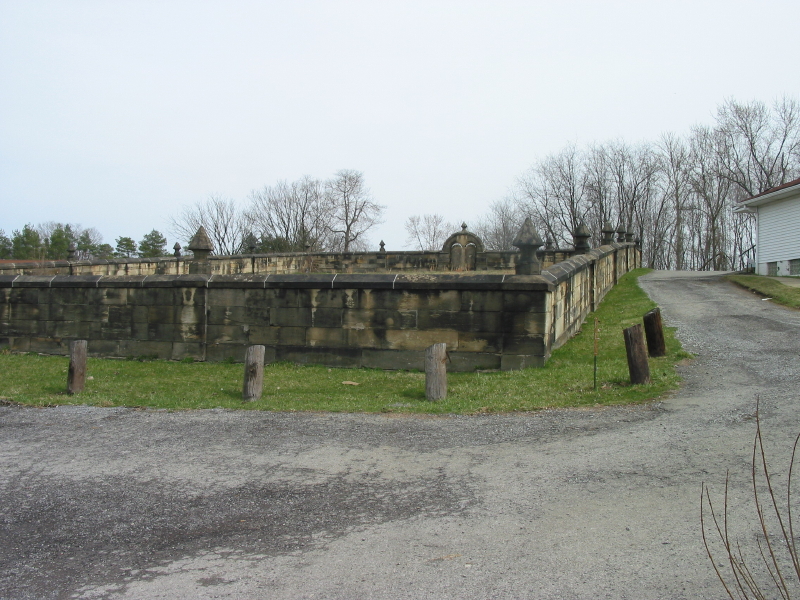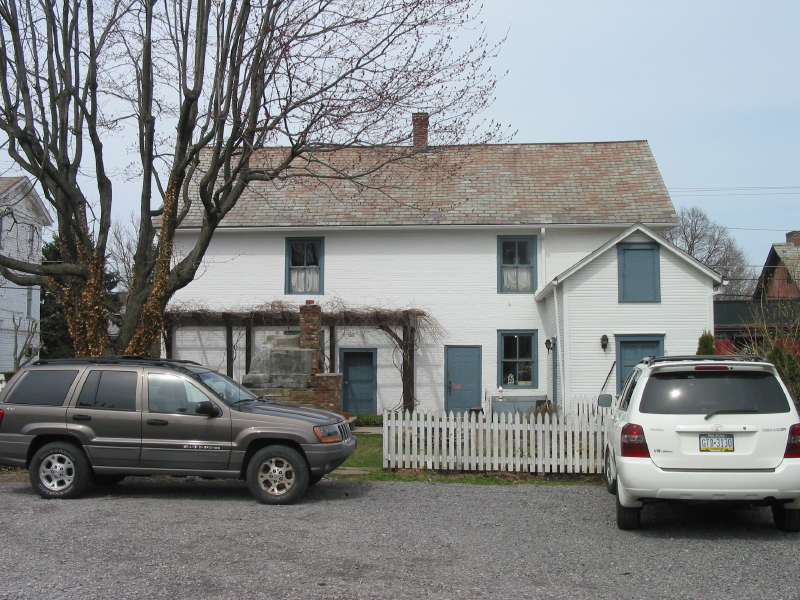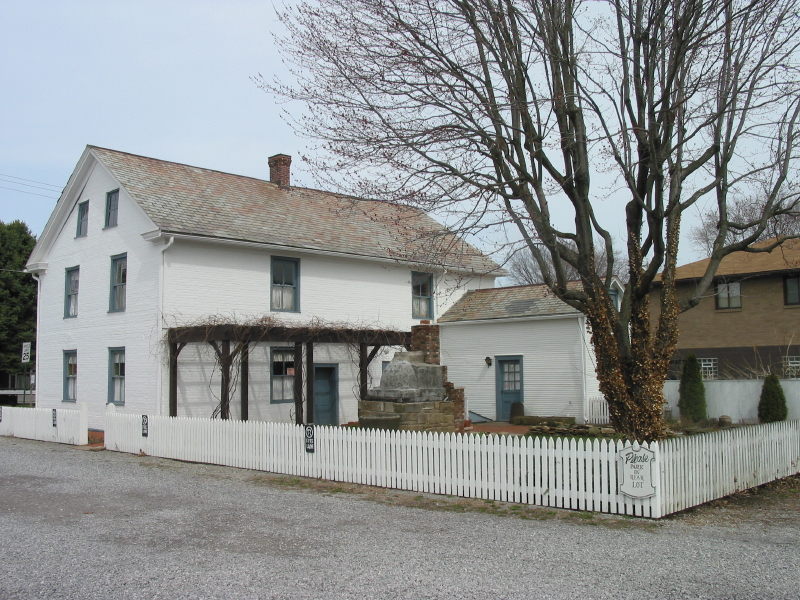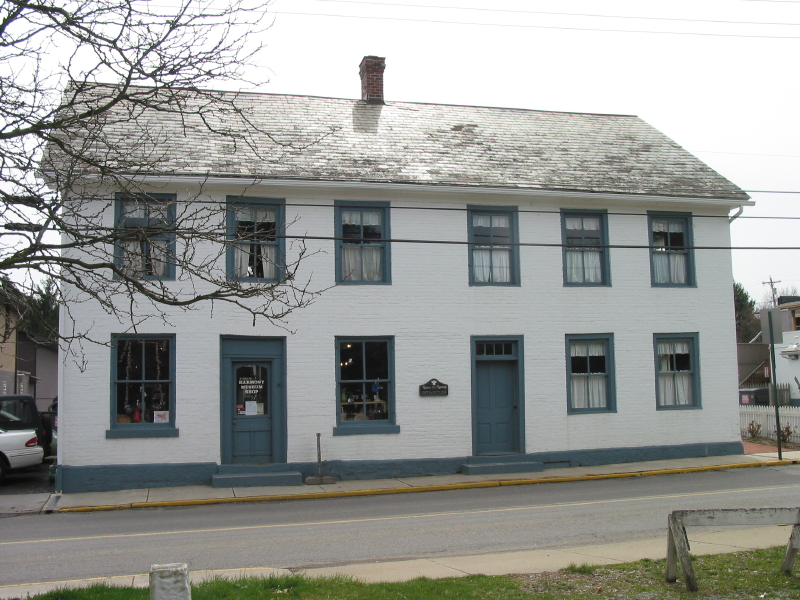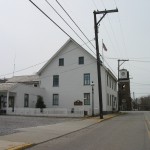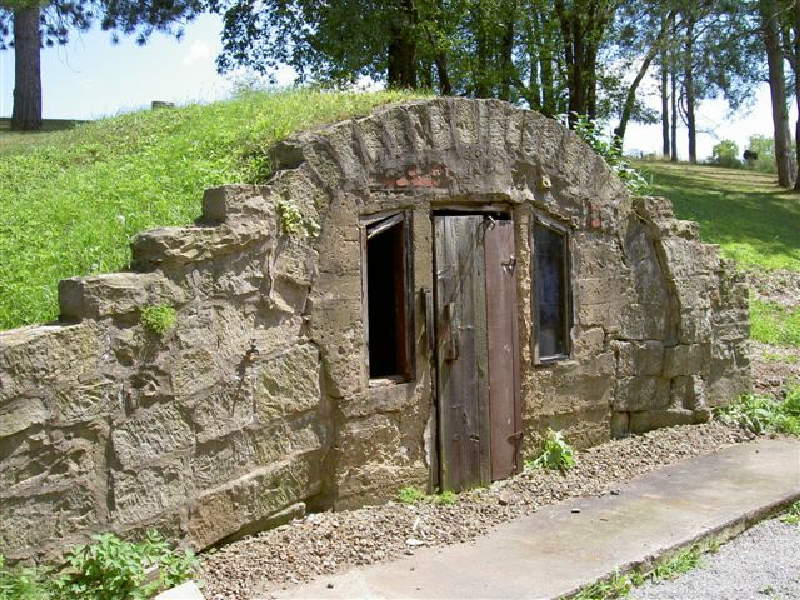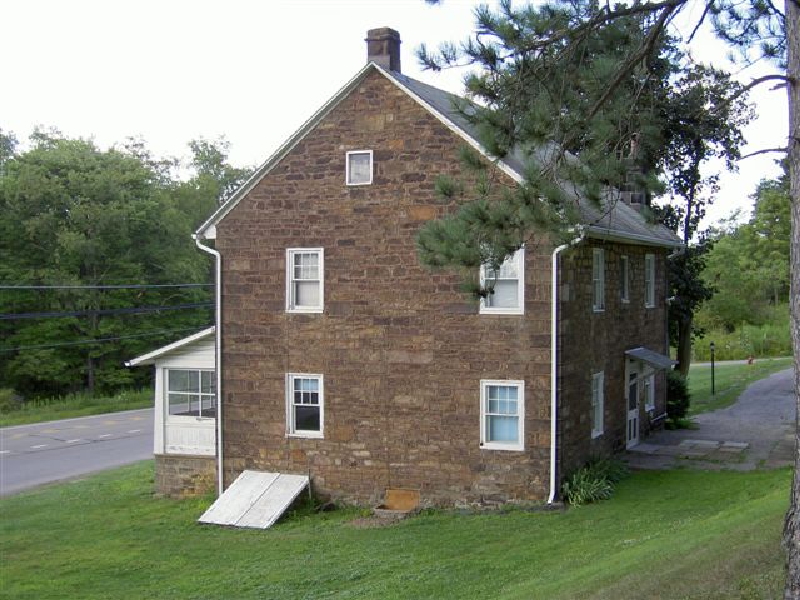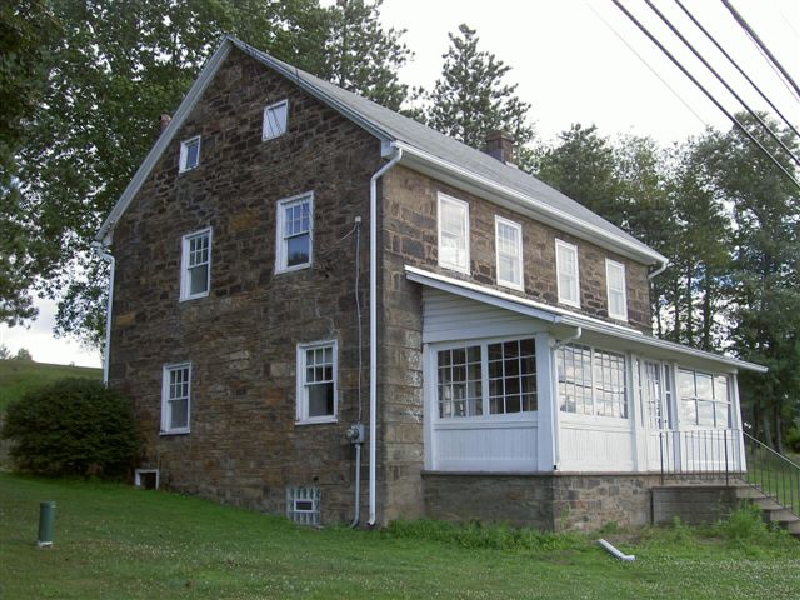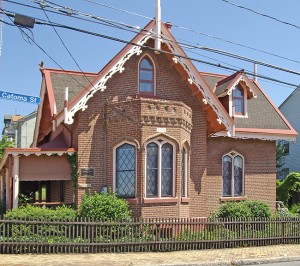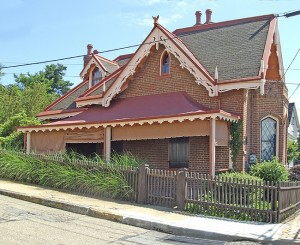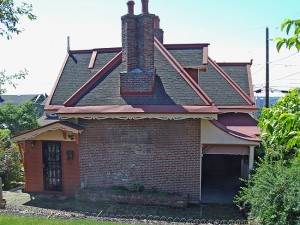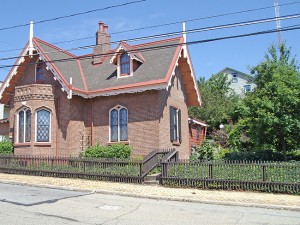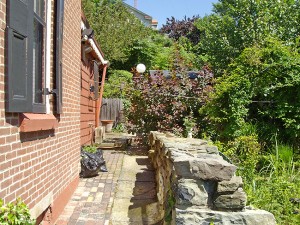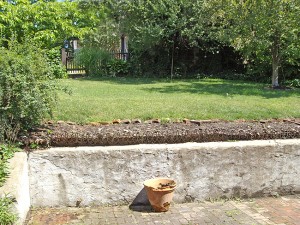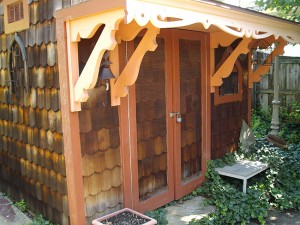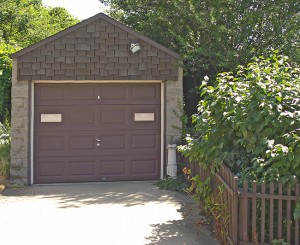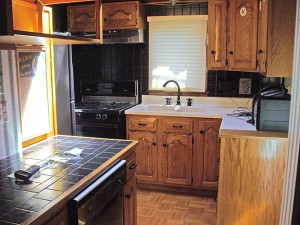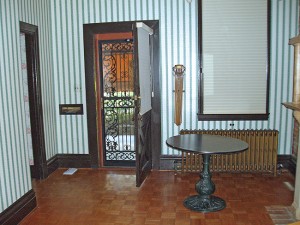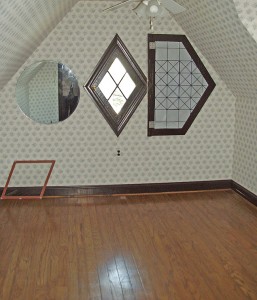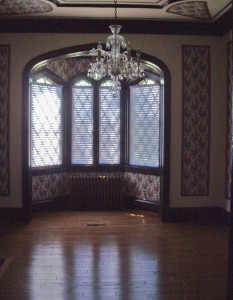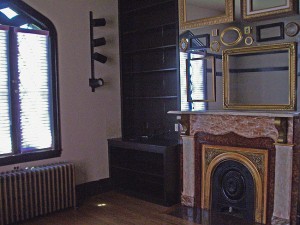
Category Archive: Planned Giving
-
Historic Harmony Donates Preservation Easements – Eight Properties Under Protection
By Jack Miller
PHLF News
April 20, 2009The Pittsburgh History & Landmarks Foundation (PHLF) has announced that Historic Harmony (HH) has donated preservation easements to PHLF that will ensure the preservation of eight historic HH properties located in Butler County.
All of the protected properties are in Harmony Borough or Jackson Township in the faster growing areas of Butler County according to recent census statistics.
Three of the protected properties, the main Harmony Museum Building at 218 Mercer Street (1809, with 1816 addition), the Wagner House museum annex at 222 Mercer Street (c. 1807 -1812), and the Harmony Society Cemetery at 831 Edmond Street (1805 – 1815) are within the Harmony National Historic Landmark District. The Harmony Society-Ziegler-Wise Barn at 303 Mercer Road (1805, with c. 1850 modification) is eligible for listing in the National Register of Historic Places.
The Vineyard Hill, with George Rapp’s Seat carved into a rock outcrop at 1 Evergreen Mill Road, the likely Harmony Society log house museum annex at 245 Mercer Street, the Mennonite Meetinghouse & Cemetery at 114 Wise Road (1825 and 1815, respectively) and Bishop John Boyer’s House at 295 Perry Highway (1816) are architecturally or otherwise significant historic properties.
A preservation easement is a voluntary legal agreement made between a property owner and an authorized preservation organization to preserve an historic site in perpetuity and recorded as such with the property’s deed.
While granting a preservation easement on a historic property limits what an owner may do with that property, granting the easement provides several benefits. The first and most obvious is that the property owner has protected the historic property in perpetuity from destruction, inappropriate alteration, or development. Another is that an individual or corporate easement donor may be entitled to claim a federal income tax charitable contribution deduction equal to the value of the preservation easement if certain conditions are met.
For example, without the charitable deduction and federal tax credits associated with the restoration of historic properties, projects like the Bedford Springs Resort, Heinz Lofts and the Armstrong Cork Factory Apartments might have never have been developed.
Under terms of its easements, HH will continue to be responsible for the maintenance, upkeep and presentation of its protected properties, and PHLF will be responsible for monitoring the properties in perpetuity to assure compliance with conditions of the easements. No changes can be made to the exterior of any of the sites without PHLF’s prior approval and any changes would have to conform to the Secretary of the Interior’s Standards for Rehabilitation. These requirements will also apply to the Bishop Boyer House, which has always been a private residence and was sold by HH to a private party on the third of April.
“Historic Harmony and PHLF are to be roundly commended for working together to create such a progressive and thoughtful preservation strategy for these significant properties,” said Bill Callahan, the Pennsylvania Historical & Museum Commission’s Bureau for Historic Preservation Western Pennsylvania representative. “What they have accomplished here may well be looked upon nationally as a model for many preservation organizations.”
HH President John Ruch noted that “Harmony was the first home of the communal Harmony Society of German Lutheran Separatists, which founded Harmony in 1804 and organized formally as a Christian communal society in early 1805. George Rapp (1757 – 1847) was its founder and spiritual and organizational head. Designation in 1974 as Western Pennsylvania’s first National Historic Landmark District was recognition of Harmony’s significance in development of the nation’s heritage and culture as the Society’s founding home.
“Many Western Pennsylvanians are familiar with PHMC’s Old Economy in Ambridge,” said Ruch, “but the extraordinary Harmony Society, which became 19th-century America’s most successful communal group, began right here in Harmony.”
“One of the properties now protected by an easement includes the isolated carved rock hilltop seat to which George Rapp would retreat to mediate.”
The idea to place preservation easements on all of HH’s historic properties grew from a proposal to sell the Bishop Boyer House while assuring its preservation.
“The home of Harmony’s first Mennonite bishop, or pastor, was donated to Historic Harmony in 2003 by the late Lillian Frankenstein of Zelienople who entrusted its preservation to us,” Ruch said. “We approached the Pittsburgh History & Landmarks Foundation to explore how we could protect the house even if we no longer owned it. They suggested using a portion of sale proceeds to endow easements that would protect not just the Bishop Boyer House, but all of our historically significant properties.”
As required by HH’s bylaws, the proposal was posed to the organization’s members, who subsequently voted to accept PHLF’s proposal to hold the easements and assume responsibility for their enforcement and defense. All easements were recorded on April 3 when the Bishop Boyer House was sold to Nancy Wilson.
“This is a win-win situation,” said PHLF President Arthur Ziegler. “Historic Harmony is able to honor its commitment to its donor while generating funds to maintain its other historic buildings. We are able to assure the protection of eight architecturally and historically significant properties, and Western Pennsylvanians have guaranteed access to a tangible part of their past.”
PHLF holds nearly 50 preservation easements and deed restrictions on Western Pennsylvania properties, including one it obtained on the 23rd of March on The Carlyle, formerly the Union National Bank Building in downtown Pittsburgh.
“PHLF’s easement initiative has played an important role in protecting historic and architecturally significant properties throughout Western Pennsylvania,” said PHMC’s Bill Callahan.
“While the Harmony easements constitute a highly commendable preservation solution for Historic Harmony and, indeed, the region,” said Callahan, “even more significant is that the action was initiated by a group of citizens passionate about their roots and willing to find a way to assure that their past will always be a part of their future.”
Historic Harmony is a 501(c)(3) nonprofit organization founded in 1943. Its mission is to preserve and promote public knowledge of the Harmony area’s history and heritage through its Harmony Museum and outreach activities, foster tourism in southwestern Butler County in cooperation with other organizations and agencies and encourage preservation of historical resources in support of educational, quality of life, economic development and associated community objectives. More information can be found at www.harmonymuseum.org.
Pittsburgh History & Landmarks Foundation is also a 501(c)(3) nonprofit organization founded in 1964 whose mission is to identify and save historically significant places; revitalize historic neighborhoods; preserve historic farms and historic designed landscapes; and educate people about the Pittsburgh region’s rich architectural heritage. More information can be found at www.phlf.org.
-
Heathside Cottage For Sale, 416 Catoma St., Fineview (SOLD)
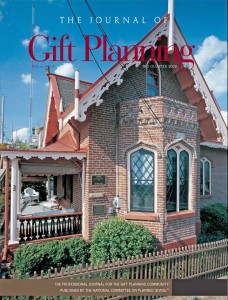 Offered by Pittsburgh History & Landmarks Foundation
Offered by Pittsburgh History & Landmarks FoundationSOLD
Judith Harvey, a member of Landmarks and the librarian of the Frank B. Fairbanks Rail-Related Archive, has donated her remaining life interest in Heathside Cottage to the Pittsburgh History & Landmarks Foundation.
Built in the mid-nineteenth century by bridge engineer James Andrews in what is now the Fineview Neighborhood of Pittsburgh, the early Victorian brick cottage located at 416 Catoma Street is listed on the National Register of Historic Places and is protected by a Landmarks preservation easement. Heathside Cottage is a model of Early Victorian design, with delicate bargeboard, a steeply-pitched roof, and diamond-paned sash windows, and has been renovated for modern living. It’s adjacent to an urban garden, looks out over the City, and is less than ten-minutes from downtown Pittsburgh.
“Judith spent 15 years restoring this historic treasure,” said Landarks President Arthur Ziegler. “Now we will do our best to find an owner who shares her enthusiasm for the uniqueness of this property.”
Persons interested in learning more about purchasing Heathside Cottage should contact Jack Miller at 412-471-5808, ext. 538 or jack@phlf.org
Proceeds from the sale of the property will endow Heathside Cottage’s preservation easement and support Landmarks’ mission.
Amenities / Points of Interest
- Completely remodeled interior that includes a home security system.
- Whole-house central air conditioning and three fireplaces.
- Detached one-car garage and a bus stop at the front door.
- Includes adjoining lot with an urban garden.
- Less than ten-minutes from downtown: save gas on your commute.
- Listed on the National Register of Historic Places and featured on WQED’s North Side Story.
- Exceptional View of Downtown Pittsburgh, and less than a block from a city overlook. .
- May be eligible for URA first-time home buyer low interest loan program
Published & Honors
Heathside Cottage In Print
- Heathside Cottage’s mystery adds to its appeal (Pittsburgh Tribune Review)
- Heathside Cottage: One Woman’s Legacy to Pittsburgh (Pittsburgh Post-Gazette)
- Pittsburgh’s Landmark Architecture
By Walter C. Kidney- “This kind of outright Gothic Revival is rare in Allegheny County today, and its quite rare to find it with its vergeboard and other sawn-out wooden trim still present and diamond-paned sash still in the windows. This is an EarlyVictorian design in spirit rather than a Mid-Victorian one, emphasizing delicacy rather than dignified massiveness, and is very much a borrowing from English Romanticism. The very word “heath” –an open area with wild shrubbery–is English, not American. it suggest the Romantic seclusion this house originally had, looking southward over the growing City of Allegheny from a vantage point 400 feet up”.
Honors
- Pittsburgh History & Landmarks Historic Landmark Plaque
- WQED’s North Side Story Video
- National Register of Historic Places, I.D.#: 74001740, Certification Date: 12/30/1974
Downloadable Fact Sheets
- Printable Form
- Exterior Photos
- First Floor Photos
- Second Floor Photos & Garage
- Video Snippet of View of City from Fineview
Photos and more information below.
Detailed Description
Property Name :
Heathside Cottage Address:
416 Catoma Street at Myler Street (Google Street View) City, State, Zip Code:
Pittsburgh, PA 15212 Sale Price:
$169,900
Architectural Style:
Gothic Revival, Early Victorian Year
Built :c. 1855 Property Type:
Residential, Single Family Lot Size:
6,863 sq. ft. (double lot) Stories:
2 HVAC :
Central Air & Heating Water:
Public Sewage:
Public Parkling:
Off Street, Detached Garage School District:
Pittsburgh Contact Information
Company:
Jack Miller Phone No.:
412-471-5808, ext.. 538,
FAX: 1-412-471-1633Email:
Jack Miller: jack@phlf.org
Exterior Views
Click Any Photo For Larger Image
Interior Views
Click Any Photo For Larger Image
-
Heathside Cottage’s mystery adds to its appeal
By Bob Karlovits
TRIBUNE-REVIEW
Saturday, July 19, 2008 It sits atop Fineview, peering over Downtown like one of the gargoyles that lurk through the house.
It sits atop Fineview, peering over Downtown like one of the gargoyles that lurk through the house.
Jack Miller from the Pittsburgh History & Landmarks Foundation knows some of the history of the home — known as Heathside Cottage — that could have been on its perch before the Civil War. It is dated 1855 on a plaque near its bay window, but continuing research debates that."The story is in the bricks," Miller says with a sigh.
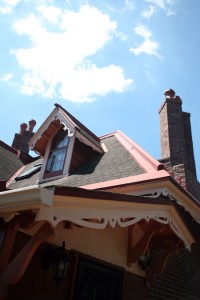 Charm from the 19th century is an obvious feature of the home the foundation has up for sale. The two-bedroom home with solidly repointed brick, plastered walls and decorative wood inside and out is being marketed at $189,900.
Charm from the 19th century is an obvious feature of the home the foundation has up for sale. The two-bedroom home with solidly repointed brick, plastered walls and decorative wood inside and out is being marketed at $189,900.The home, which had a guest spot in Rick Sebak’s 1977 "North Side Story," also has a one-car garage, a stylistically matching shed, a bricked patio and a garden area that once was a dilapidated home next door.
"I love it," says filmmaker Sebak about the home. "It is the kind of house that just makes you want to visit and spend some time there."The home is small with high ceilings in its two main levels, but low ones in the basement where former owner Judith Harvey hung signs saying: "The ceiling is low, the archways lower, anyone over 5 feet, DUCK."
Upstairs, the 10- and 11-foot ceilings give space to rooms that otherwise are tight and small. It is not a home for big parties, big people or big families.
The first floor consists of a kitchen-dining room, parlor and den. Upstairs are two bedrooms and a bath, with a skylight over the staircase adding another touch of airiness to the home.
The outside is dominated by ornate, wooden trim that Miller jokes earned the home the name of the "witch’s house" from neighborhood kids.
Harvey, who is retired, serves as librarian of the Frank B. Fairbanks Rail-Related Archive for the foundation. She moved out of the home at the end of June.
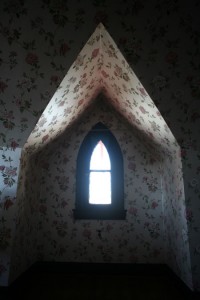 Harvey bought the home in 1992 as a project to restore. After her husband died in 1996, she moved in permanently and continued her work, adding ornamental gargoyles as she went. In 2000, she entered into an arrangement with the foundation known as a retained life estate.
Harvey bought the home in 1992 as a project to restore. After her husband died in 1996, she moved in permanently and continued her work, adding ornamental gargoyles as she went. In 2000, she entered into an arrangement with the foundation known as a retained life estate.Under that arrangement, Miller says, the title of the home was transferred to the foundation, but she retained the right to live there. She remained responsible for taxes and maintenance, but received a charitable income-tax deduction.
She also received a similar deduction this year for the unused part of her donation to the foundation. History & Landmarks officials then received control of the property to manage or market whatever way they wished,
Harvey does not want to discuss matters, but Miller says he believes she simply grew tired the work that comes along with taking care of a property.
Al Tannler, director of historical collections for the History & Landmarks, says no data exists on the construction of the home. But it may be related to a cluster of like homes called Evergreen Hamlet in Ross.
Col. James Andrews, a self-taught stone mason and engineer, bought the Fineview property in 1862, so Tannler believes he "had the home built and may have named it" Heathside, which shows up on a stone above the bay window.
He did work for Joseph Kerr (1816-1888), an architect who designed the Gothic Revival Evergreen Hamlet homes. Therefore, Tannler suggests, Kerr is a likely suspect for the design of Heathside.
That whole story, though, puts it behind the 1855 date, but that doesn’t matter too much, he says.
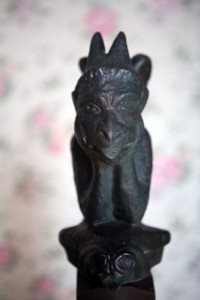 "It’s significance is its rare quality," he says, "and the fact that it is one of a few of its kind."
"It’s significance is its rare quality," he says, "and the fact that it is one of a few of its kind."Bob Karlovits can be reached at bkarlovits@tribweb.com or 412-320-7852.
-
Easement Policy Revised
Landmarks recently revised its Easement Policy in accordance with the Land Trust Alliance’s Standards and Practices, as recommended by the National Trust for Historic Preservation. The Standards and Practices are “ethical and technical guidelines for the responsible operation of a land trust.”
Landmarks holds easements on a variety of historic properties throughout western Pennsylvania including single family homes in the Mexican War Streets, historic farms in Greene and Washington County, the Heinz Lofts, Armstrong Cork and the recently restored Bedford Springs Resort to name a few.
Preservation easements are recorded land use agreements in which a property owner voluntarily places restrictions on the building and/or land that maintain the historic or architectural significance of the property. Preservation easements, therefore, are an important historic preservation tool because they preserve historic buildings in perpetuity. Donors of preservation easements may also qualify for a federal charitable contribution deduction.
-
Pirates vs. Yankees Tickets still Available
By Jack Miller
To commemorate the 1960 world series and honor its special members, Landmarks is hosting a major gala at the Pirates Yankees baseball game at PNC Park on Wednesday, June 25th where former Pirate great Bill Virdon will be honored for his defense of the Forbes Field wall.
Tickets are $150 each ($125 for Landmarks members) and include dinner, a game ticket, the chance to meet World Series hero Bill Virdon and hear Landmarks President Arthur Ziegler’s “state of local preservation update,” as well as hear a state of the economy update by our event sponsor, Morgan Stanley’s North Bay Group of Great Neck, NY. A special bus tour of Landmarks preservation projects will also be part of the package on a first-come, first served basis.
Since there are only a limited number of tickets and the Pirates – Yankees series is a sell-out, please contact Jack Miller at 412-471-5808, ext. 538 or jack@phlf.org as soon as possible to reserve your place or for more information. Proceeds from the event will support Landmarks preservation efforts.
-
Charitable Gift Annuity Rates to drop July 1…Last chance to lock in on higher returns while helping Landmarks
Landmarks is sending this notice because we recently received word that those rates will decrease July 1, which means that the payment to you on any annuity after that date will be lower than on an annuity taken out now.
Charitable gift annuities are a wonderful way to enhance your retirement income and help Landmarks preserve the places that make Pittsburgh home! A charitable gift annuity is an arrangement where, in exchange for an irrevocable gift of money or property, the Pittsburgh History & Landmarks Foundation will pay you (or you and a spouse) fixed payments for life-no matter what happens to the economy. On the death of the last income beneficiary, the remainder is paid to Landmarks to support our preservation mission. The amount of annual annuity income you receive is determined by the number of income beneficiares (just you or you and a spouse) the age or age of the income beneficiaries, the size of the gift and interest rates set by the American Council on Gift Annuities.
For most charitable gift annuities, a substantial portion of the payment is free of tax during the period of your life expectancy and you would be entitled to a charitable deduction, subject to certain conditions, in the year of the gift.
How can I get more information about a charitable gift annuity?
To learn more about your specific situation, contact Jack Miller at jack@phlf.org or 412-471-5808, ext. 538 or use the gift calculator on our web site at http://plannedgifts.phlf.org/design.php to see how you and Landmarks can benefit from you charitable gift annuity. Remember, time is of the essence to lock in the pre-July 1 rates.
NOTE: Any U.S. federal tax references contained herein are not intended or written to be used, and cannot be used, for the purpose of (i) avoiding penalties under the Internal Revenue Code or (ii) promoting, marketing or recommending to another party any transaction or matter addressed herein. Landmarks does not provide legal or tax advice. You should always consult your personal legal or tax advisors when considering any planned gift. A copy of the official registration of Pittsburgh History & Landmarks Foundation may be obtained from the PA Department of State by calling toll free, within Pennsylvania 1-800-732-0999. Registration does not imply endorsement.
-
Natrona Bank Building Purchased
Landmarks has obtained a charitable bargain sale gift of the Natrona Heights Bank Building for the Natrona Comes Together Association (NCTA) from North Carolina resident Terry Wien.
The century-old building is the focal point of a restoration project being underwritten through the efforts of State Senator Jim Ferlo and is being carried out by NCTA and PHLF.
-
Allegheny County Designates PHLF to Spearhead Main Street’s Program
Allegheny County Executive Dan Onorato announced at a press conference in Swissvale yesterday the initiation of a large-scale Allegheny County Main Streets program. Four pilot communities will be involved: Swissvale, Elizabeth, Tarentum, and Stowe. Landmarks has been designated to operate the program in conjunction with the Allegheny County Department of Economic Development.
Landmarks has selected Town Center Associates of Beaver County to serve as sub-consultant with responsibility for communications with local officials and property and business owners, development of a website and a newsletter, and conduct demographic research.
Landmarks will analyze the historic buildings, prepare recommendations for restoration, develop a real estate strategy for improving retail offerings, conduct market research, assist the County with major facade grant and low-interest loan programs, all designed to help revitalize these Main Street communities.
Funding is coming from Allegheny County and private foundations in Pittsburgh.
Landmarks will field a team of staff members with a variety of experience that will be useful for a comprehensive program, including market research, real estate financial analyses, design, graphics, planned giving, construction and real estate development.
Work begins immediately.

